Abstract
Planetary quarantine requirements associated with the launch of two Viking spacecraft necessitated microbiological assessment during assembly and testing at Cape Canaveral and the Kennedy Space Center. Samples were collected from selected surface of the Viking Lander Capsules (VLC), Orbiters, (VO), and Shrouds at predetermined intervals during assembly and testing. Approximately 7,000 samples were assayed. Levels of bacterial spores per square meter on the VLC-1 and VLC-2 were 1.6 x 10(2) and 9.7 x 10(1), respectively, prior to dry-heat sterilization. The ranges of aerobic mesophilic microorganisms detected on the VO-1 and VO-2 at various sampling events were 4.2 x 10(2) to 4.3 x 10(3) and 2.3 x 10(2) to 8.9 x 10(3)/m2, respectively. Approximately 1,300 colonies were picked from culture plates, identified, lypholipized, and stored for future reference. About 75% of all isolates were microorganisms considered indigenous to humans; the remaining isolates were associated with soil and dust in the environment. The percentage of microorganisms of human origin was consistent with results obtained with previous automated spacecraft but slightly lower than those observed for manned (Apollo) spacecraft.
Full text
PDF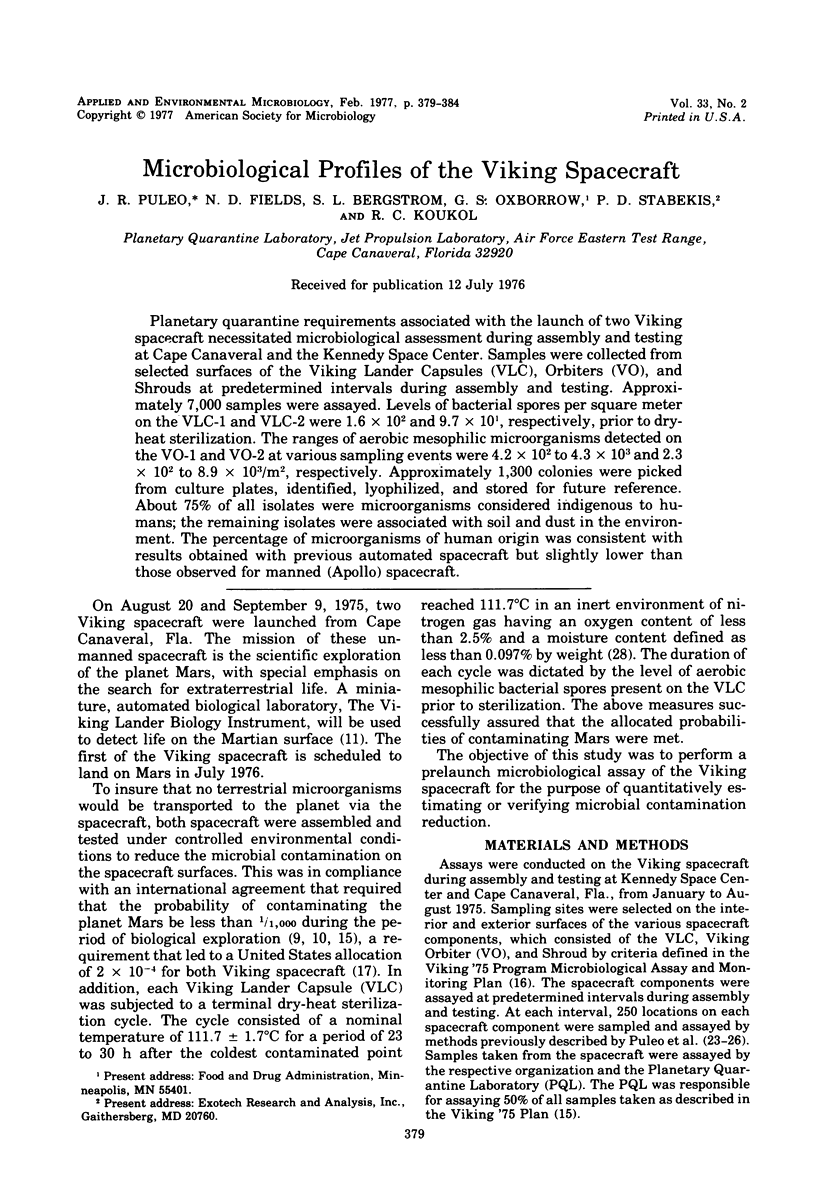
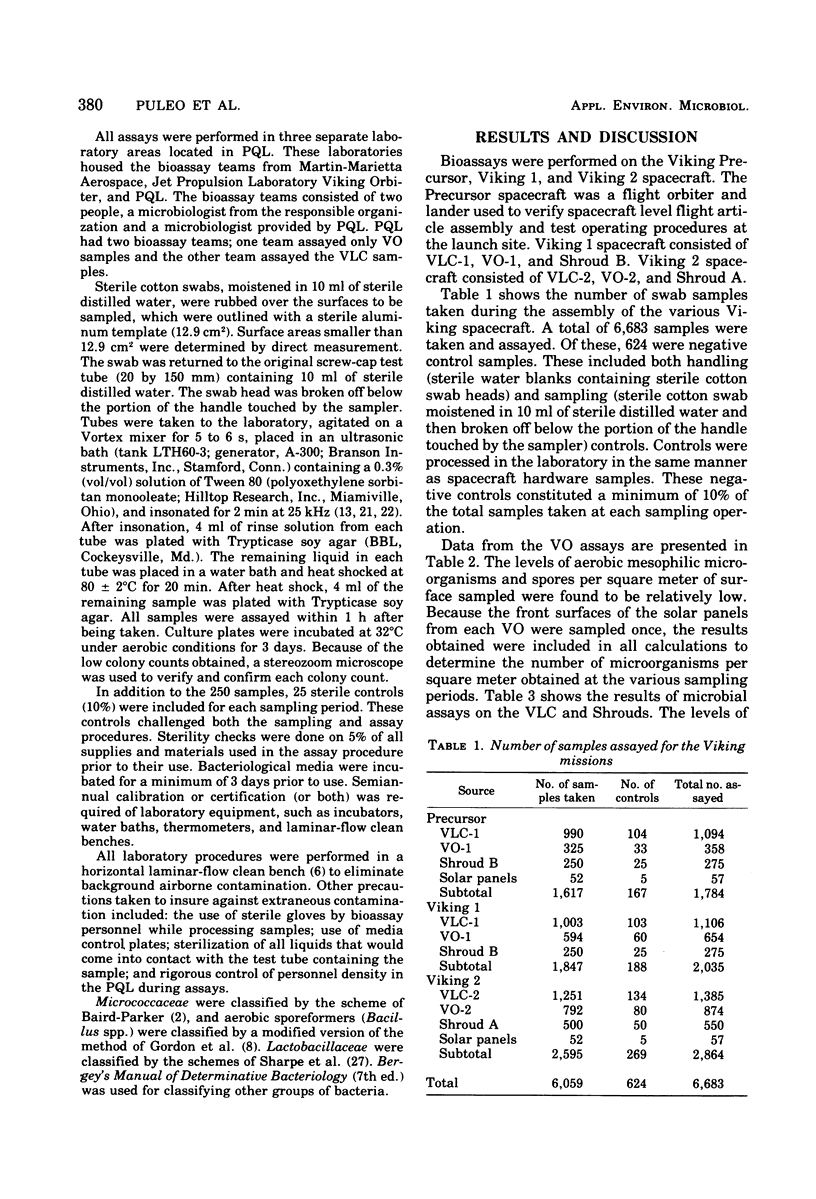
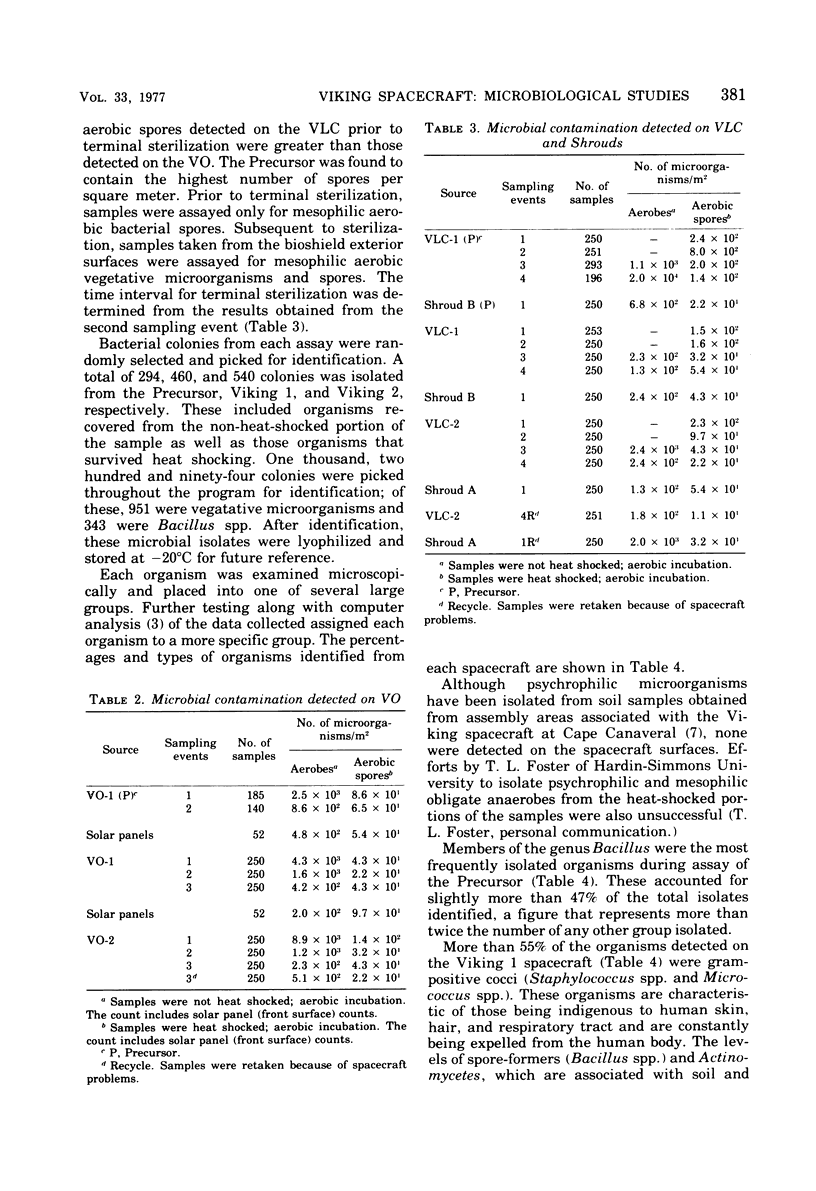
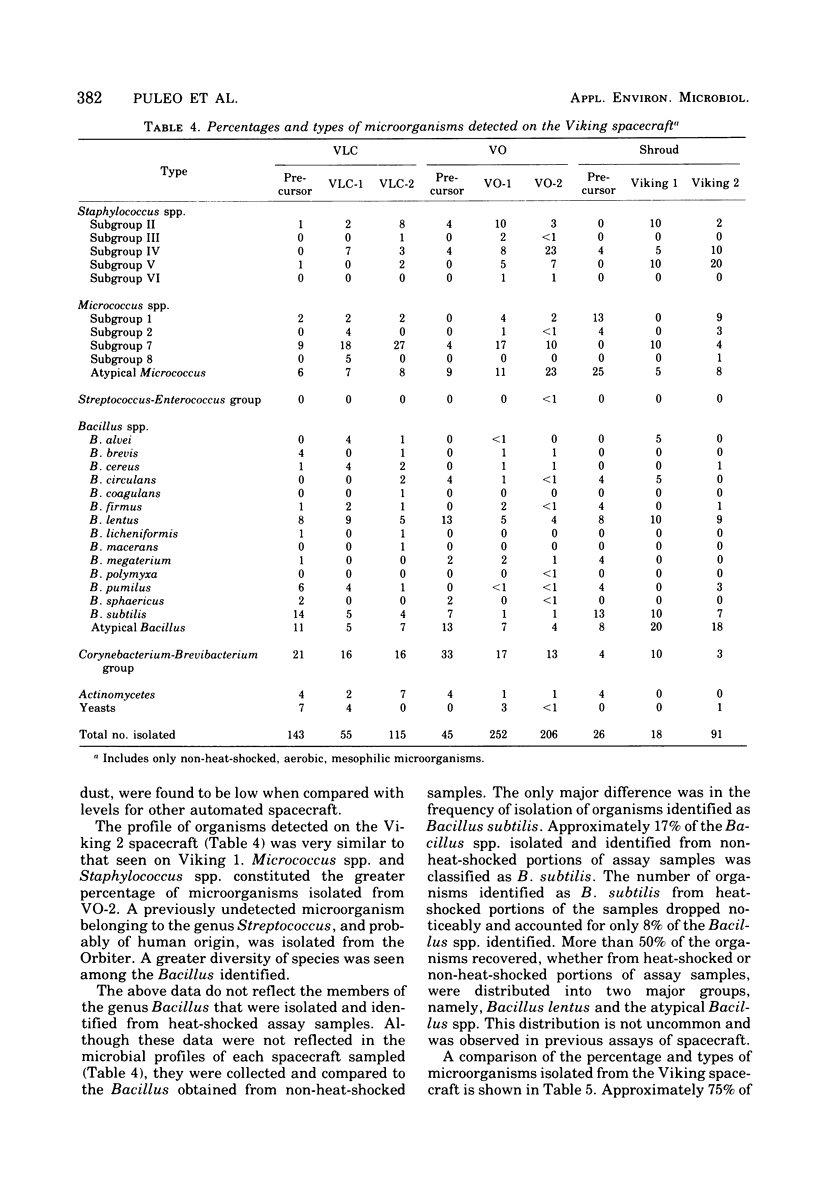
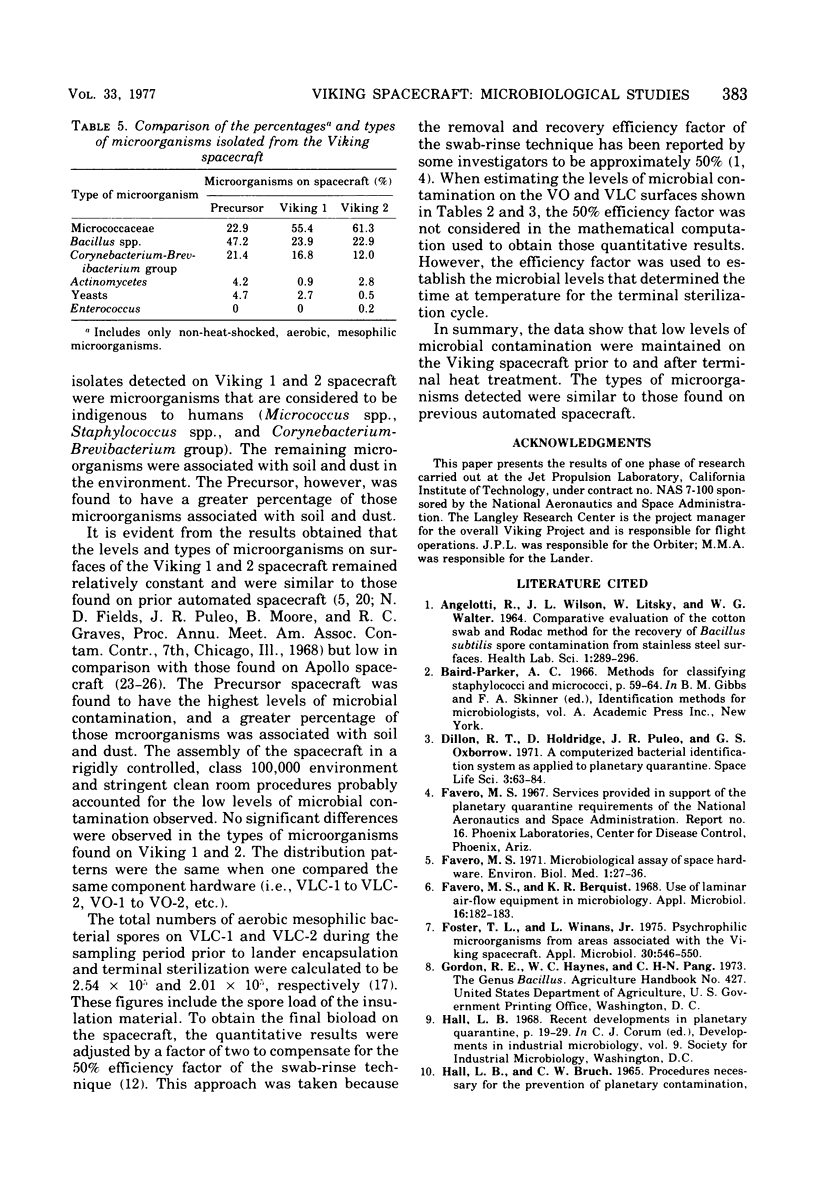

Selected References
These references are in PubMed. This may not be the complete list of references from this article.
- Angelotti R., Wilson J. L., Litsky W., Walter W. G. Comparative evaluation of the cotton swab and Rodac methods for the recovery of Bacillus subtilis spore contamination from stainless steel surfaces. Health Lab Sci. 1964 Oct;1(4):289–296. [PubMed] [Google Scholar]
- Dillon R. T., Holdridge D., Oxborrow G. S., Puleo J. R. A computerized bacterial identification system as applied to planetary quarantine. Space Life Sci. 1971 Aug;3(1):63–84. doi: 10.1007/BF00924216. [DOI] [PubMed] [Google Scholar]
- Favero M. S., Berquist K. R. Use of laminar air-flow equipment in microbiology. Appl Microbiol. 1968 Jan;16(1):182–183. doi: 10.1128/am.16.1.182-183.1968. [DOI] [PMC free article] [PubMed] [Google Scholar]
- Favero M. S. Microbiologic assay of space hardware. Environ Biol Med. 1971 May;1(1):27–36. [PubMed] [Google Scholar]
- Foster T. L., Winans L., Jr Psychrophilic microorganisms from areas associated with the Viking spacecraft. Appl Microbiol. 1975 Oct;30(4):546–550. doi: 10.1128/am.30.4.546-550.1975. [DOI] [PMC free article] [PubMed] [Google Scholar]
- Puleo J. R., Favero M. S., Petersen N. J. Use of ultrasonic energy in assessing microbial contamination on surfaces. Appl Microbiol. 1967 Nov;15(6):1345–1351. doi: 10.1128/am.15.6.1345-1351.1967. [DOI] [PMC free article] [PubMed] [Google Scholar]
- Puleo J. R., Favero M. S., Tritz G. J. Feasibility of using ultrasonics for removing viable microorganisms from surfaces. Contam Control. 1967 Apr;6(4):58–passim. [PubMed] [Google Scholar]
- Puleo J. R., Fields N. D., Moore B., Graves R. C. Microbial contamination associated with the Apollo 6 spacecraft during final assembly and testing. Space Life Sci. 1970 May;2(1):48–56. doi: 10.1007/BF00928955. [DOI] [PubMed] [Google Scholar]
- Puleo J. R., Oxborrow G. S., Fields N. D., Hall H. E. Quantitative and qualitative microbiological profiles of the Apollo 10 and 11 spacecraft. Appl Microbiol. 1970 Sep;20(3):384–389. doi: 10.1128/am.20.3.384-389.1970. [DOI] [PMC free article] [PubMed] [Google Scholar]
- Puleo J. R., Oxborrow G. S., Fields N. D., Herring C. M., Smith L. S. Microbiological profiles of four Apollo spacecraft. Appl Microbiol. 1973 Dec;26(6):838–845. doi: 10.1128/am.26.6.838-845.1973. [DOI] [PMC free article] [PubMed] [Google Scholar]


